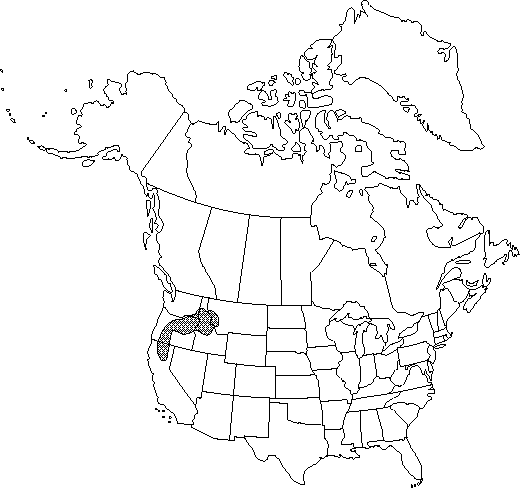familyRanunculaceae
genusRanunculus
subgenusRanunculus subg. Ranunculus
sectionRanunculus sect. Flammula
speciesRanunculus populago
Ranunculus populago
Erythea 3: 19. 1895.
Endemic
Treatment appears in FNA Volume 3.
Revision as of 07:30, 30 July 2020 by imported>Volume Importer
Stems erect or ascending, never rooting nodally, glabrous. Roots thickened basally, glabrous. Leaves: basal leaf-blades with base obtuse to cordate; proximal cauline leaf-blades semicircular to cordate or ovate, 1.2-5.1 × 1.5-2.9 cm, base cordate to broadly obtuse, margins entire or crenulate, apex broadly acute to rounded. Inflorescences: bracts narrowly elliptic to ovate or lanceolate. Flowers: receptacle glabrous or hispidulous; sepals 4-5, spreading or reflexed from base, 3-5 × 2-4 mm, glabrous; petals 5-6, 4-9 × 2-5 mm; nectary scales glabrous. Heads of achenes hemispheric, 3 × 4-5 mm; achenes 1.6-1.8 × 1.2 mm, glabrous; beak lance-subulate, straight, 0.2-1 mm.
Phenology: Flowering spring–summer (Apr–Aug).
Habitat: Wet ground and shallow water, in wet meadows, bogs, streams, lakes
Elevation: 1300-2000 m
Distribution

Calif., Idaho, Mont., Oreg., Wash.
Discussion
Selected References
None.
Lower Taxa
None.
... more about "Ranunculus populago"
not prolonged +
1-2 times as wide as thick +
glabrous +
not ornamented +
thick +
1.2 +
dehiscing +
straight +
much shorter +
terminal +
absent +
lance-subulate +
undivided +
leaflike +
absent +
narrowly elliptic;ovate or lanceolate +
sepaloid +
absent +
aggregated +
globose;cylindric +
tuberous +
alternate +
1-15(-40)-flowered +
unlobed +
sessile +
small +
abundant +
filiform +
free +
shorter +
pedicellate +
symmetric +
bisexual +
3;5 +
cylindric;obovoid;cylindric;obovoid;globose;lenticular;discoid +
3 cm30 mm <br />0.03 m <br /> (?) +
hemispheric +
compound +
undivided +
free +
crenulate;entire +
absent +
attached +
projecting +
glabrous +
hypogynous +
yellow +
distinct +
4mm;9mm +
conspicuous +
5;6 +
reduced +
sheathing +
absent +
simple +
petiolate +
Erythea +
1895 +
tuberous +
low +
narrow +
tuberous +
glabrous +
thickened +
1;many +
petaloid +
spurred +
imbricate +
white;yellow;white;yellow;purple;sometimes;green +
deciduous +
distinct +
? (?) +
glabrous +
veined +
Endemic +
distinct +
(5-)10-many +
absent +
bulbous +
rooting +
glabrous +
absent +
tuberous +
persistent +
absent +
Ranunculus populago +
Ranunculus sect. Flammula +
species +
rhizomatous +